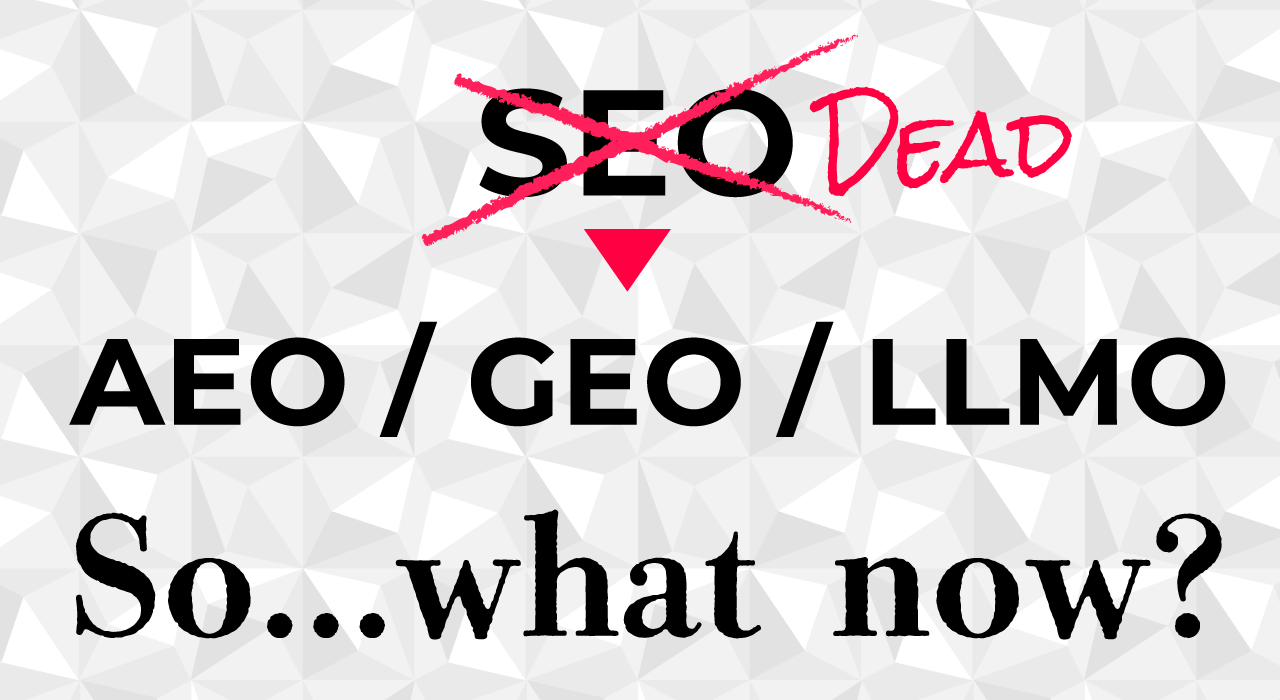
I've been watching the digital marketing space for over a decade, and I can tell you this much: SEO as we knew it is dead. Not dying—dead.
Sure, we all spent years obsessing over keyword density, chasing backlinks, and tweaking meta descriptions. Hell, I remember when getting that coveted #1 spot on Google felt like winning the lottery. But here's the thing nobody wants to admit: those days are over.
The internet has fundamentally changed. When was the last time you actually clicked through ten blue links to find an answer? Exactly. Most of us are asking Siri while driving, chatting with ChatGPT, or getting instant answers right in Google's search results.
This shift isn't coming—it's already here. And if you're still playing by the old SEO rulebook, you're basically optimizing for a world that no longer exists.
Three new approaches are taking over, and honestly, most marketers are completely unprepared for them:
Answer Engine Optimization (AEO) - Getting your content served up as the direct answerGenerative Engine Optimization (GEO) - Being the source that AI models quote and cite
Large Language Model Optimization (LLMO) - Making your content useful for AI systems themselves
These aren't just fancy acronyms someone cooked up for a conference talk. They represent real shifts in how people find and consume information online.
Remember when getting traffic meant people had to click through to your site? Those days feel quaint now.
Answer Engine Optimization is about becoming the voice that speaks when someone asks Alexa a question, or the text that appears in Google's AI-generated response box. Your goal isn't to get clicked—it's to get quoted.
I learned this the hard way with a client's cooking blog. We were ranking well for "salmon cooking tips," getting decent traffic, but something felt off. Then I noticed people were getting their answers directly from voice search results. They weren't visiting the site at all.
So we pivoted. Instead of writing long-form recipe posts, we started crafting content specifically for voice queries:
The traffic dropped initially, but brand mentions and voice search visibility shot through the roof. People started recognizing the brand as "that cooking expert Alexa always quotes."
The key insight? AEO content needs to be structured like you're having a conversation, not writing an essay. Use natural language, answer questions directly, and for the love of all that's holy, get to the point quickly.
Here's where things get interesting. When someone asks ChatGPT or Claude a question, where do you think those answers come from? They're not pulling information out of thin air—they're synthesizing content from sources across the web.
Generative Engine Optimization is about becoming one of those trusted sources. It's not about ranking #1 anymore; it's about being the authority that AI models cite when they generate responses.
I've seen this play out with a cybersecurity firm I work with. They're not a huge company, but they consistently publish original research and maintain clean, well-structured content. Result? Perplexity and ChatGPT regularly cite them as sources, sometimes ahead of much larger competitors.
The secret sauce for GEO isn't complicated, but it requires discipline:
What's fascinating is that GEO rewards depth over breadth. Instead of covering everything superficially, focus on becoming the definitive source for specific topics within your niche.

Grammarly is an AI-powered writing assistant that helps improve grammar, spelling, punctuation, and style in text.

Notion is an all-in-one workspace and AI-powered note-taking app that helps users create, manage, and collaborate on various types of content.
This is where most people's eyes glaze over, but stick with me because LLMO might be the most important of the three.
Large Language Model Optimization isn't just about being found or cited—it's about making your content useful for AI systems themselves. Think custom GPTs, AI agents, and tools that need to understand and work with your data.
A SaaS company I consulted for recently realized their documentation was completely unusable by AI systems. Customers were building chatbots to help with their product, but the bots couldn't parse their help docs effectively. After restructuring everything with LLMO principles—using markdown, adding semantic markup, creating API endpoints for key data—their customer satisfaction scores jumped 40%.
LLMO requires thinking beyond human readers entirely. You're optimizing for machines that need to understand, process, and potentially recreate your content in new contexts.
Look, I get it. Learning three new optimization frameworks sounds exhausting when you're already struggling to keep up with regular SEO. But here's the uncomfortable truth: your competitors are already making this shift.
The businesses that figure out AEO, GEO, and LLMO now will own attention in the AI-first internet. Everyone else will be fighting over scraps from an increasingly irrelevant traditional search model.
I've watched too many great companies lose relevance because they were slow to adapt to digital shifts. Don't let that be you.
You don't need to overhaul everything overnight. Here's how I typically advise clients to approach this:
If you're a content creator or blogger: Start with AEO. Restructure your best-performing content to answer questions directly. Add FAQ sections. Use natural language.
If you run a business: Focus on GEO. Become the authoritative source for your industry by publishing original insights and maintaining clean, citable content.
If you're in tech or SaaS: LLMO should be your priority. Make your documentation and data AI-friendly. Think about how chatbots and AI agents might need to interact with your content.
The companies mastering this transition aren't just adapting to change—they're positioning themselves to dominate it. The question isn't whether this shift will happen; it's whether you'll be ready when it does.
And honestly? The window for getting ahead of this curve is closing fast.

